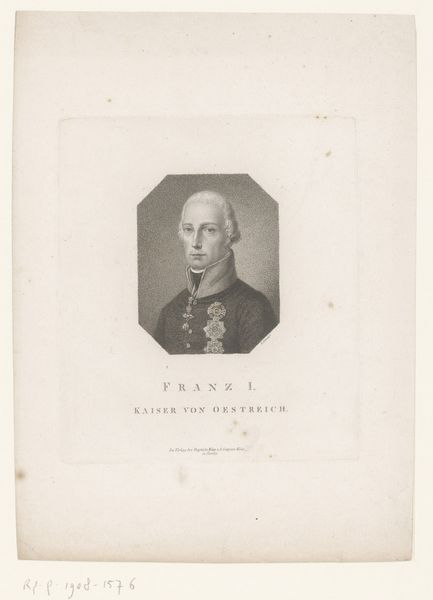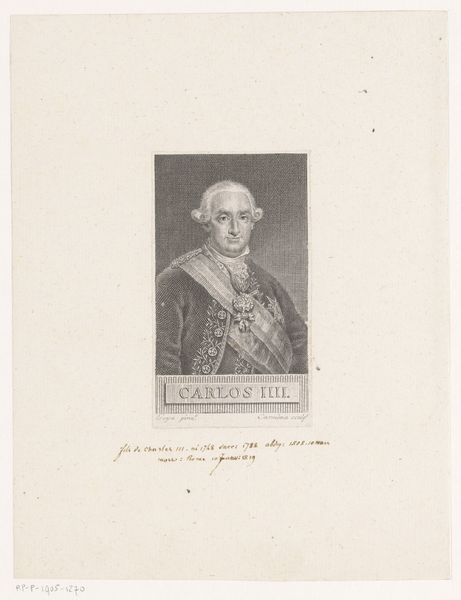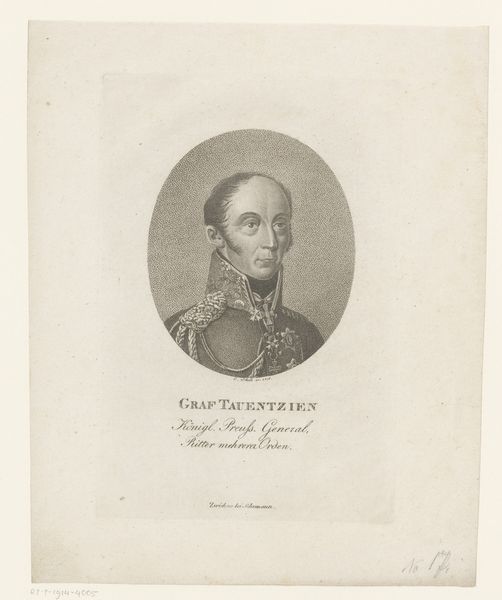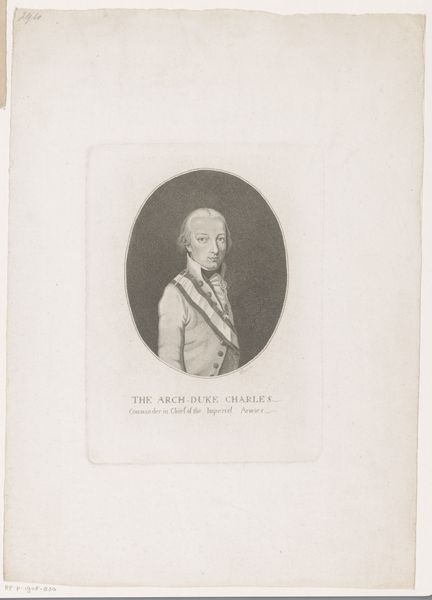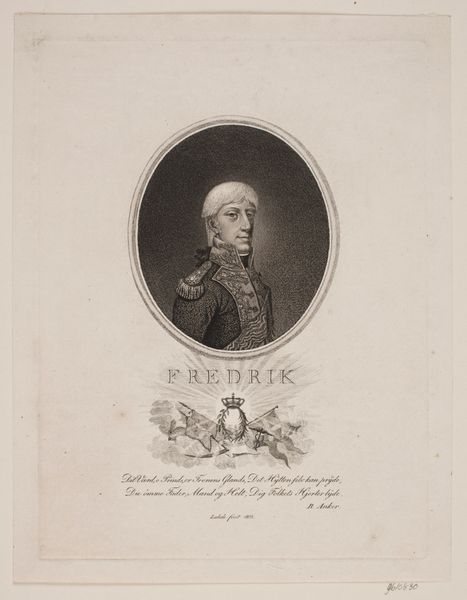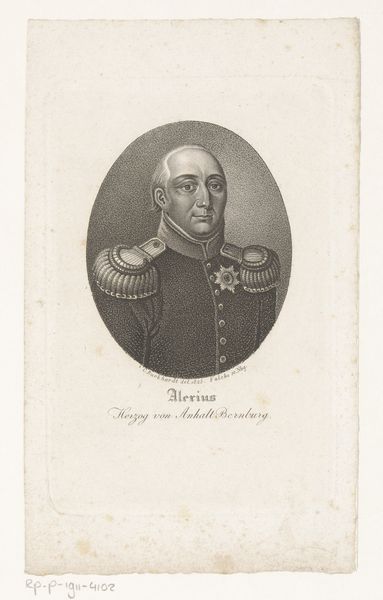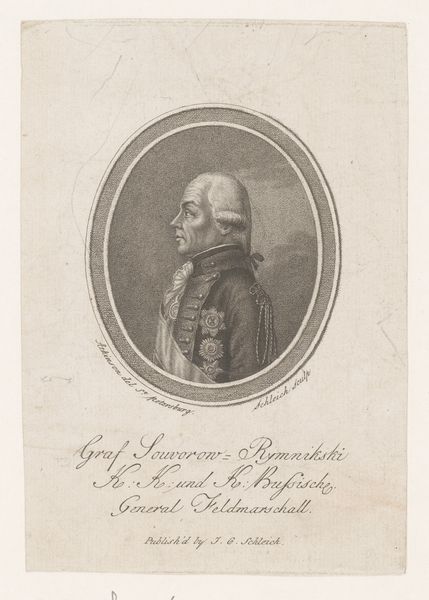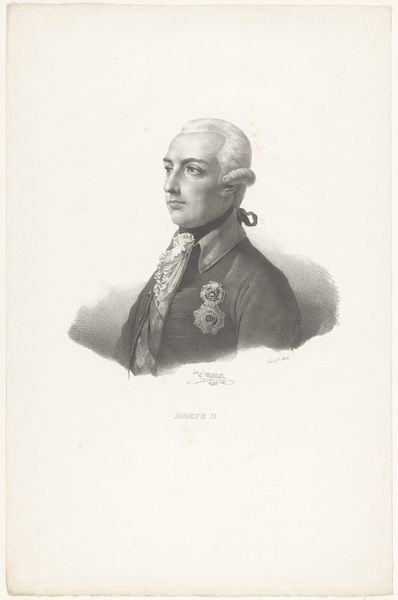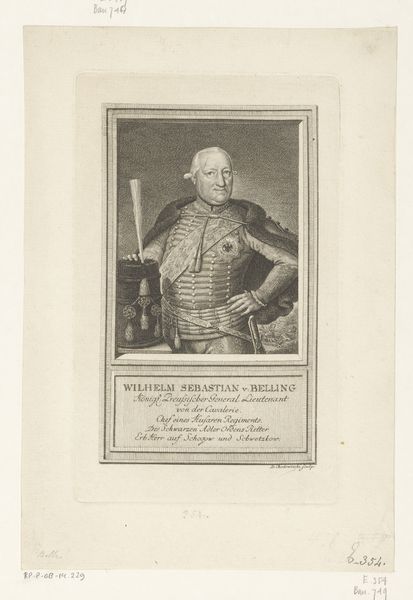
print, engraving
#
portrait
#
pencil drawn
#
neoclacissism
# print
#
old engraving style
#
pencil drawing
#
history-painting
#
engraving
Dimensions: height 321 mm, width 256 mm
Copyright: Rijks Museum: Open Domain
Curator: Here we have a portrait print, created sometime between 1778 and 1833, depicting Franz II, Holy Roman Emperor, by Meno Haas. The print's precise and delicate linework gives it an almost ethereal quality. Editor: Yes, and despite that, I immediately feel the weight of power, even a certain coldness. His posture, the high collar, it’s all very controlled and imposing. You can almost feel the pressure of his position bearing down on him. Curator: Absolutely, and it's crucial to consider the Neoclassical style influencing the image. The crisp lines, the idealized form—all work to convey a sense of order and permanence, linking Franz II to the legacy of Roman emperors. These symbols serve as propaganda tools meant to legitimize the royal's divine authority. Editor: Which, let’s remember, was a system of governance increasingly under threat. The late 18th and early 19th centuries saw massive upheaval across Europe. A portrait like this can be viewed not just as a representation, but as an active assertion of power amidst rising challenges to the monarchy. I'm particularly interested in the role this image played in his self-fashioning given the sociopolitical moment. Curator: It's an image meant to endure, just as the Roman Empire's legacy had endured, conveying cultural continuity, as seen with the laurel leaf design embroidered in his attire. Editor: That sense of control also plays out visually. The limited color palette, the framing oval—everything works to isolate him, marking his distinction from, in his view, those below. But this also highlights the artificiality of that separation, especially during an era of growing class consciousness. It begs us to ask who exactly the print was designed to address, and in which ideological registers. Curator: And consider the symbolic implications for contemporary audiences of employing a style inspired by antiquity? This reference to Rome elevates him to the symbolic position of 'emperor', meant to influence collective imaginings of history painting. Editor: Ultimately, an image intended to evoke permanence perhaps unwittingly reveals the fractures forming in the foundations of the empire. Curator: Precisely, by exploring cultural continuities within shifting sociopolitical contexts, we may explore this portrait not as simply a symbol of tradition but also one that inadvertently reflects tensions and shifts in collective memory. Editor: A poignant reminder that even the most carefully constructed images are ultimately viewed and interpreted through the lenses of evolving societal norms and historical events.
Comments
No comments
Be the first to comment and join the conversation on the ultimate creative platform.
